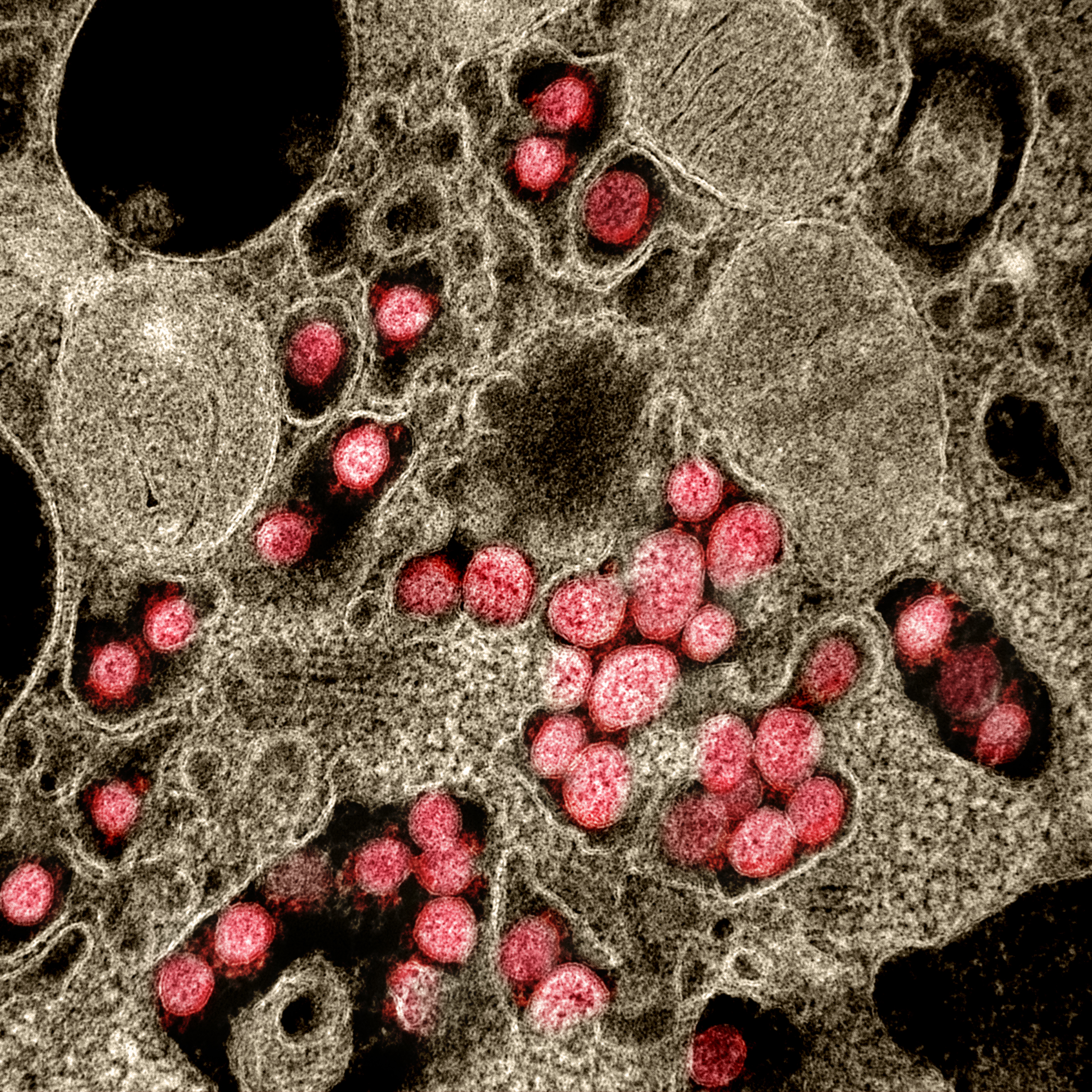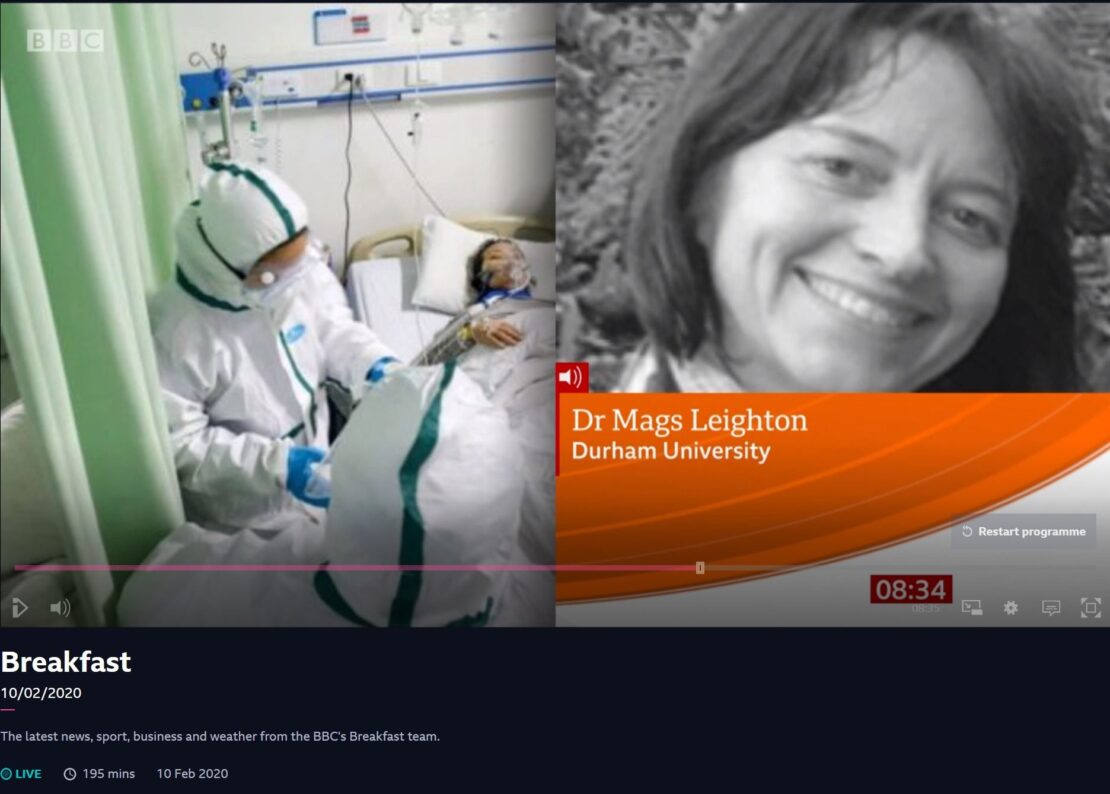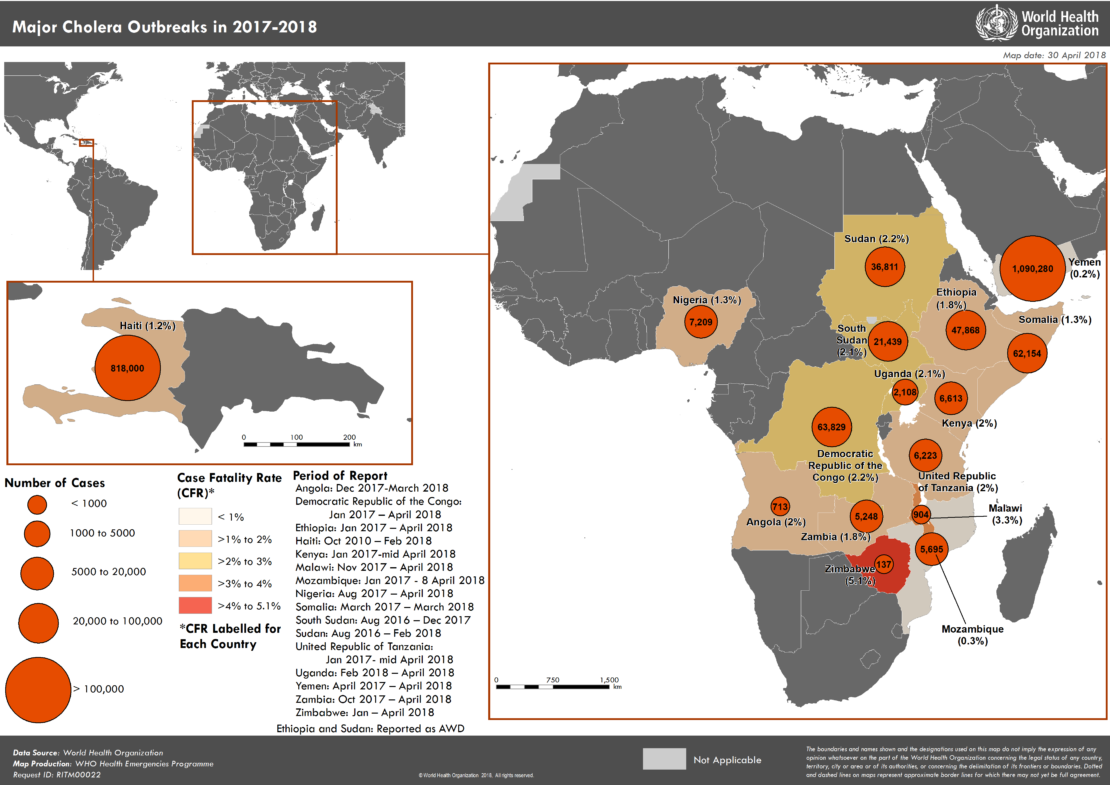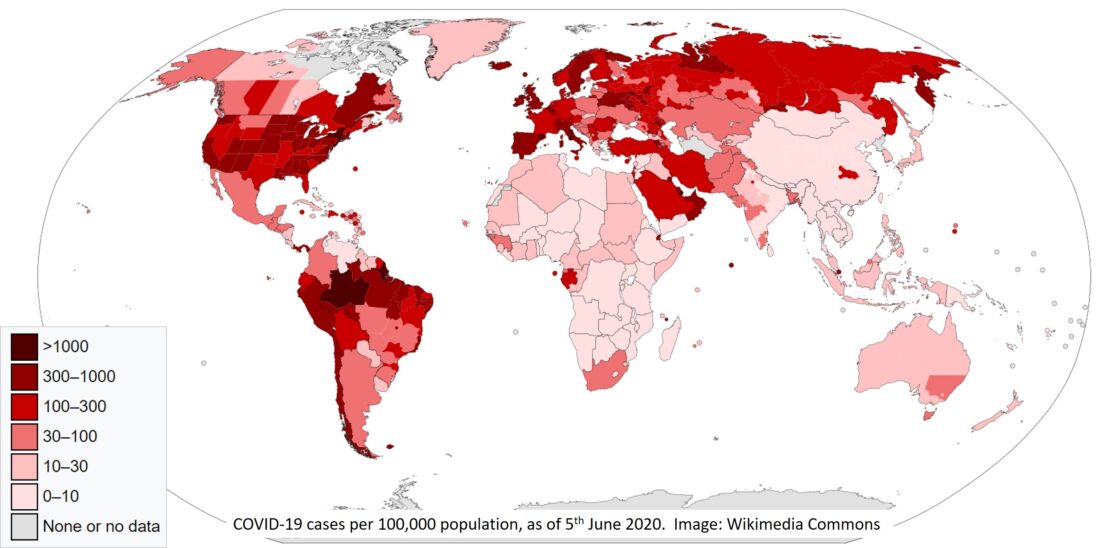“Love in a time of [coronavirus]”: COVID-19 in context

“All that was needed was shrewd questioning… to conclude once again that the symptoms of love were the same as those of cholera.”
This quote is from the novel ‘Love in a time of Cholera’ by Gabriel Garcia Marquez (‘Gabo’ to our South American colleagues), set during the sixth cholera pandemic of 1899-1923. I began reading it in January, alongside the emerging research literature on COVID-19, whilst representing our Network and the Durham Centre for Global infectious Diseases though over 30 interviews to UK local, national and international radio and TV, discussing the biology and disease epidemiology of coronaviruses. This juxtaposition has caused me to think a lot about pandemics and has brought to my awareness some surprising similarities between cholera and COVID-19. Let me explain.
1. Cholera and COVID19 both infect the gut, and are difficult to diagnose
The first clinical cases of SARS-CoV-2 (causing COVID-19), in Wuhan, China, were identified when patients with severe disease were admitted to hospital with acute respiratory distress.1 The virus is genetically similar to SARS-CoV (Severe Acute Respiratory Syndrome), spreading via airborne droplets.2 In practice, the disease is difficult to identify and diagnose with many patients showing no or only mild respiratory symptoms.3 The virus also infects the small intestine,4 causing nausea and diarrhoea, and can spread via a faecal-oral transmission route;5-7 some patients present only enteric (gut-based) symptoms. Since the live virus persists in faeces for some time after patient recovery, some clinicians are now calling for routine stool sample testing for SARS-CoV-2alongside throat swabs.8.9
Cholera is also an enteric disease, spread by contaminated food or water.10.11 As with COVID-19, cholera is difficult to diagnose because most cases show mild or moderate symptoms, which are similar to those caused by a range of other infections.10
2. Cholera, COVID-19 and coronavirus diseases can pass between humans and animals
Coronaviruses are familiar to veterinarians as enteric diseases of livestock, and can spread from animals to humans – and vice versa. Although we do not yet know the animal source of the now human disease SARS-CoV-2, a few cases of human to animal transmission have been reported so far, including a domestic dog12 and a tiger in captivity.13
Cholera is considered primarily a human disease. However, cholera can infect humans from an animal source,14 and human-derived cholera outbreaks have been reported in bison, cattle and domestic dogs.10,15

Tree pangolin (Phataginus tricuspis). Pangolins are a suspected route of transmission for SARS-CoV-2 from animals to humans. Image: Wikimedia Commons
3. Cholera and COVID-19 disproportionately impact populations living in poverty
Risks from cholera (and other major pandemic diseases – HIV, TB, malaria and neglected tropical diseases, NTDs) are exacerbated by conditions of overcrowding and poor sanitation,10 which are frequently associated with poverty. Likewise, close contact and poor hygiene are known to increase rates of COVID-19 transmission.
The economic impact of COVID-19 is anticipated to increase poverty in lower and middle income countries in 2020 and 2021, effectively erasing the progress made since 2017 towards alleviating poverty via the sustainable development goals.16 Many of India’s poorest people were literally starving after only a short time in lockdown, without paid work.17 This shows that economic factors also impact health risks for members of our poorest communities.
4. We are currently amidst global pandemics of both cholera and COVID-19
The last cholera pandemic began in 1961, and has not yet ended, with epidemics currently in Algeria, Angola, Bangladesh, Burundi, Chad, the Democratic Republic of the Congo, Djibouti, Ethiopia, Kenya, Saudi Arabia, Haiti, India, Malawi, Mozambique, Nigeria, Niger, Somalia, Sudan, South Sudan, United Republic of Tanzania, Uganda, Yemen, Zambia, and Zimbabwe.11,18 This ‘forgotten pandemic’ highlights cholera’s neglect, alongside the ‘officially’ neglected diseases and is similarly prioritised with World Health Organization (WHO) ‘roadmap’ goals for 2030.19
The COVID-19 outbreak, which began in late 2019, has elicited intense global attention and a rapid international response. Yet this is the third coronavirus epidemic to threaten global health in last two decades; the earlier SARS-CoV and MERS-CoV outbreaks, in 2003 and 2018 respectively, show that risks from this virus family have also been overlooked.20
So what about cholera, COVID-19 and…love?
“There are only two emotions: love and fear”
Elizabeth Kubler Ross
In ‘Love in a time of cholera’, Marquez uses the cholera pandemic as a metaphor for love and death, both of which challenge us to change.
The COVID-19 pandemic is our current challenge, obliging us to face death, grief, and our own vulnerabilities. The discomfort from physical distancing measures reveals just how closely connected we are with each other, which I feel shows how our connections with each other are based on love.
Distancing to reduce our risk of encountering or transmitting the virus, also shows how our choices as individuals do make a difference. As we navigate the coming emergence from lockdown, we have the chance to consciously choose ‘love’, and implement radical changes that will, in time, transform our world.
Be well. Take care. Stay safe.
Mags Leighton
References
- Huang C, et al. Lancet 2020; 395: 497–506.
- World Health Organization. Coronavirus. Available at https://www.who.int/health-topics/coronavirus#tab=tab_1 (accessed May 2020).
- Arons MM, et al. N Eng J Med 2020; 382(22): 2081-2090.
- Ziegler et al., 2020, Cell 181, 1–20.
- Xiao F, et al. Gastroenterol 2020; 158: 1831-1833.
- Ng SC, Tilg H. Gut 2020; 69(6): 973-974.
- Gu J, et al. Gastroenterol 2020;158:1518–1519
- Cipriano M, et al. Cureus 12(3): e7422.
- Xiao F, et al. Gastroenterol 2020; 158: 1831-1833.
- Mayo Clinic. Cholera: Symptoms and causes. Available at https://www.mayoclinic.org/diseases-conditions/cholera/symptoms-causes/syc-20355287 (Accessed May 2020).
- World Health Organization. Cholera: The forgotten pandemic. October 2018. Available at https://www.who.int/cholera/the-forgotten-pandemic/en/ (accessed May 2020).
- Lanese N. “First dog with confirmed coronavirus infection has died – but we don’t know if it was because of the virus”. Livescience.com. March 18, 2020. Available at https://www.livescience.com/coronavirus-first-case-human-to-dog-transmission.html (accessed May 2020).
- BBC News. “Coronavirus: Tiger at Bronx zoo tests positive for COVID-19”. April, 2020. Available at https://www.bbc.co.uk/news/world-us-canada-52177586 (accessed May 2020).
- Almagro-Morena S and Taylor RK. Microbiol Spectr 2013; 1(2): doi:10.1128/microbiolspec.OH-0003-2012
- Center for Food Security and Public Health, Iowa State University. Cholera: Fast Facts. June 2006. Available at http://www.cfsph.iastate.edu/FastFacts/pdfs/cholera_F.pdf (accessed May 2020).
- Kharas H and Hamel K. Turning back the poverty clock: how will COVID-19 impact the world’s poorest people? 6th May 2020. Available at https://www.brookings.edu/blog/future-development/2020/05/06/turning-back-the-poverty-clock-how-will-covid-19-impact-the-worlds-poorest-people/ (accessed May 2020).
- Guardian News. How India’s coronavirus lockdown is affecting its poorest citizens. April 2nd 2020. Available at https://www.theguardian.com/world/video/2020/apr/02/how-indias-coronavirus-lockdown-is-affecting-its-poorest-citizens-video (accessed May 2020).
- Pritchard, H. Cholera Pandemic has a single Global Source. 25th August, 2011. Available at https://www.bbc.co.uk/news/health-14664450 (accessed May 2020).
- World Health Organization Global Task Force on Cholera Control. Ending Cholera: A global Roadmap to 2030. Available at https://www.who.int/cholera/publications/global-roadmap.pdf?ua=1 (accessed May 2020).
- Contini C, et al. J Infect Dev Ctries 2020; 14(3):254-264.



